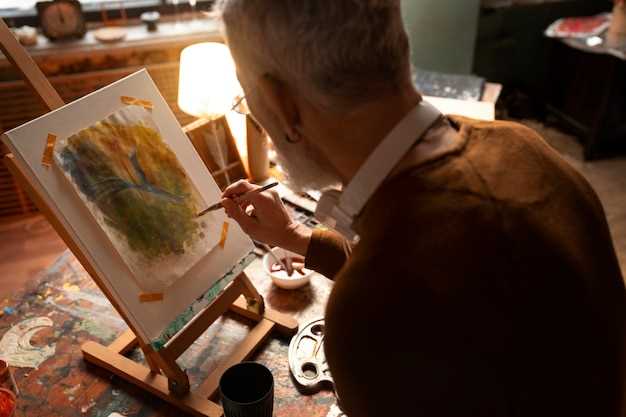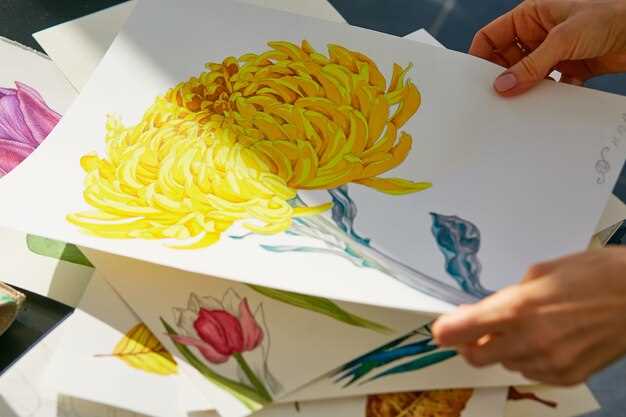
Begin with Starry Night (1889) to quickly grasp van Gogh’s dynamic brushwork and the way he renders emotions in the sky and village. This iconic work, created in Saint-Rémy, uses swirling blues and bright yellows to convey motion and mood. It marks a turning point in his career and demonstrates how color and line can express inner states, these elements you can spot across the ten paintings in this guide. For broader context, the Kröller-Müller Museum in otterlo houses several van Gogh pieces that illuminate his approach.
Next, study The Potato Eaters (1885), a stark kitchen scene that uses earthy tones to highlight daily life. Then turn to Sunflowers (1888), whose warm yellows glow with hints of orange and signal his confidence in color. These works reveal an eager artist who pursued truth in everyday subjects, with these include beach studies from his coastal visits. They are true markers of his development, showing how he created a private world through light and pigment, which carried forward into his later masterpieces.
Move to Bedroom in Arles (1888), a study of domestic calm where the blue walls and simplified shapes feel intimate and private. Then examine Café Terrace at Night (1888), whose orange glow spills onto the street and signals a bold color lesson that still resonates in modern urban scenes.
Then examine Starry Night Over the Rhône (1888) and The Night Café (1888). The Rhône scene offers calmer reflections on light over water, while The Night Café uses bold greens and reds to create tension; as you study these night scenes, you might hear a soft oise from a distant station.
Consider Irises (1889) and Wheatfield with Crows (1890). Irises burst with pigment purity and brushwork, while Wheatfield with Crows leans toward foreboding skies and restless energy; many of these works circulate in major public galleries, while some remain in private collections.
Finish with Self-Portrait with Bandaged Ear (1889) and Church at Auvers (1890). The bandaged ear self-portrait embodies pain turned into color, and the Auvers scene closes his arc with luminous energy that continues to inspire artists today. This selection of ten paintings created a concise, powerful view of van Gogh’s work and its incredible influence.
Vincent van Gogh Paintings: A Quick Guide
Start with saint-rémy works to ground your view of his technique; the luminous yellow against deep shadows shows his true approach to light and emotion.
In january he painted in auvers while illness pressed on him; a doctor stayed nearby, and he worked physically, applying bold strokes to convey movement.
These pieces span self-portraits and scenes of fields, water, and wheat; the lily motif appears in still lifes, while prussian blue sharpens shadows and yellow tones pop from the surface, which invites closer looking. Each depiction reveals a different mood. Tracking by year helps you see how his style evolved step by step.
lisa notes that the self-portraits reveal him as himself, confronting tumultuous days and fears within them; the works are housed in major institutions, making them accessible for study and comparison.
| Painting | 年 | Housed | Notes |
|---|---|---|---|
| Starry Night | 1889 | MoMA, New York | depiction of the view from the asylum window; yellow orbs, deep shadows. |
| Self-Portrait with Bandaged Ear | 1889 | Courtauld Gallery, London | self-portrait; intense brushwork, raw emotion. |
| Sunflowers | 1889 | National Gallery, London | bold yellow petals, thick texture, prussian blue accents. |
| Irises | 1889 | J. Paul Getty Museum, Los Angeles | fluorescent greens and rich purples; study of form and color. |
| Wheat Field with Crows | 1890 | Van Gogh Museum, Amsterdam | turbulent sky; depiction of fields in motion, symbolism of year. |
| Café Terrace at Night | 1888 | Kröller-Müller Museum, Otterlo | urban scene with water and lamp light; glowing yellow foreground. |
Café Terrace at Night (1888): Identify the night scene composition and color contrasts
Begin with a quick diagnostic: identify how van Gogh builds the night scene through a strong diagonal perspective and a bold color cut between warm terrace light and the cool sky. The viewer’s eye travels from the foreground tables to the glowing café interior, then along the receding street toward the lamps, creating a modern, immersive display that heightens the atmosphere. That setup is often considered a masterful balance of space and light.
The composition centers on perspective: the terrace edge, the row of lamps, and the open doorway pull the scene toward the vanishing point. This setup flattened space in places, yet van Gogh preserves depth with linear cues and alternating bands of light and shadow. The hotel across the street and the rooms behind the windows anchor the urban setting while leaving the sky spacious above.
Color contrasts rely on warm yellows and ochre from the lamps and terrace, juxtaposed with deep burgundy accents in the awning and the blue of the night sky. The rich palette uses complementary relationships to make the glow spill onto the cobbles and tables, producing an expressive, vibrant surface. The sky is calm and starry, not stormy, which makes the warm glow the more striking.
From a display perspective in a modern context, highlight how the warm light anchors the eye before exploring the cool surroundings. This approach suits teaching color theory: the night becomes a playground for saturated yellows against blues, with bold brushwork conveying texture and effects. Including notes for social media, such as Facebook, helps learners relate to how iconic images circulate. The источник света originates in the lamps and the cafe interior, defining the overall composition and lending a sense of rhythm that holds the viewer’s attention.
Takeaway: map the glow from the terrace into the street, watch how the perspective guides the eye, and notice how the rich, vibrant palette makes the scene feel like a stage on which people, including a vineyard landscape or a wheat field nearby, might gather. The colors of burgundy and warm yellows create an inviting atmosphere that could be translated into a modern mural for hotels or rooms, capturing the nocturnal mood of Arles like a beacon that draws the viewer in.
Starry Night (1889): Understand the swirling sky and rhythmic brushwork
Start by tracing how the sky’s curves pull your gaze upward; this immediate focus is the key to understanding the painting’s motion. The swirls radiate like wind-driven spirals, and the thick, impasto adds depth as you move across the canvas. Arguably, this is where the night becomes an active, almost musical field, a magical rhythm that keeps the eye looping and invites you to decorate the mood with color.
The sky’s depth contrasts with the flattened village below, where the wall of cottages and the church tower anchor the composition. The lily-like halos around stars evoke a romantic glow and a sense that the night is alive, not a mere plan, while the wind carries a quiet energy through the scene.
During his stay at Saint-Rémy, Van Gogh faced intense mental strain yet produced strong artistic breakthroughs. This work was painted in Saint-Rémy-de-Provence, near Auvers, and the memory of the countryside–the wind through villages and fields–feeds the composition. Gauguin‘s influence appears in bold color choices and simplified forms that let the brushwork sing, pushing the scene toward a universal harmony rather than a strict record of place.
To study technique, compare the original with high-quality copies または print reproductions. The layer-by-layer buildup–colors drawn from cobalt and yellows, sweeping diagonals, and thick strokes–helps the viewer sense depth and motion. The result is works that feel romantic そして magical, a working method that remains remarkably more than a simple night scene, enduring in galleries and prints alike as a vivid memory of the past.
Sunflowers (1888–1889): Explore color palettes and texture in petals

Try this recommendation: focus on the petals’ color shifts across the following canvases to see how Van Gogh builds heat in yellow and depth at the edges.
Color palette highlights: cadmium yellow, Naples yellow, lemon yellow, ochre, and touches of brown umber blend with wheat tones to create a sunlit core and cooler edges.
Texture details: thick impasto and brisk, short strokes dominate the petals; the bottom layers receive more pressure, producing raised ridges that catch light.
Energy and wind: The brushwork conveys energy, with petals bending as if wind pushes the scene, and in some readings the arrangement hints at food nearby.
Context and provenance: In otterlo, the Kröller-Müller Museum houses one version from 1888–1889; later, a famous article about van Gogh’s sunflowers highlights how the color work communicates heat and life.
Evokes mood: The petals evoke sunlit gardens and quiet vineyard corners, while the living brushstrokes build depth that mirrors color work found in bedroom pieces from the period.
Viewing tips: Next, compare the bottom petals to the next sections; observe how the cool background helps the yellows pop; notice how the texture changes across the canvases to convey movement and light shows more depth.
Conclusion: This work shows Van Gogh’s powerful style in color and texture, and reading this article helps you capture the painter’s energy on living canvases, revealing more nuance.
The Bedroom (1888): Examine perspective, interior lighting, and mood
Begin with five key elements: bed, chair, night stand, doorway, and window. Each element clarifies how perspective pulls you into the room, and they share the same goal: to center you within them, with the bed anchoring the scene while walls tilt and floorboards converge toward the door.
Lighting, the interior’s heartbeat, comes from a night source that bathes the blues on the walls and bedding in cool tones, while small burgundy and orange accents glow softly. The result reads as intimate and meditative, with the light shaping space and mood rather than detailing every surface.
The mood is private and restful, a sanctuary that feels very lived in. Intense color choices turn a simple night scene into a quiet statement about home; although the room is small, the mood remains strong. The composition arguably makes you feel you are inside the space, with the memory of a sister’s visits lingering in the air.
Context and influences: Painted in the south of France, the work sits in a famous tradition of interior studies. It belongs among van Gogh’s subjects that explore daily life, called The Bedroom in Arles by some descriptions. The vineyard surroundings around Arles shimmer in the distance, and the work is titled The Bedroom as part of van Gogh’s exploratory period. The approach nods to degas and monet in color play, while the scene remains iconic, with visible brushwork that reads as colorful and symbolic. Print reproductions helped spread its fame among audiences. The voices of degas and monet guide the composition as much as van Gogh’s own eye.
Viewing tips: Examine the five main lines–the bedposts, chair legs, door frame, window edge, and floor planks–to see how they guide your gaze. Notice how the night source interacts with blues and oranges to create atmosphere; compare this interior with monet’s garden scenes and degas’ arrangements to understand different handling of light and space. The Bedroom remains a famous, colorful example of van Gogh’s work and its personal sense of home in france’s south, a vivid reminder of the artist’s devotion to simple, everyday subjects.
Irises (1889): Analyze bold contrasts and layering techniques
Focus on reproducing van Gogh’s core move: pair cool blues with warm yellows to push the irises forward against a pale wall. The orange glow around the stems heightens the contrast, making the field feel vibrant. Use thick, visible brushwork to build texture and depth rather than a flat wash.
- Palette strategy: choose blues such as ultramarine or cobalt for the petals, with yellows like Naples or chrome, and subtle orange accents to sharpen edges. This combination creates an immense, powerful rhythm that reads across the wall and into the surrounding field.
- Layering technique: lay a cool underlayer, then apply successive dabs and strokes that physically stack on the surface. Let the paint build up in layers, so the petals acquire volume and the shadows deepen in a way that feels tactile and alive.
- Form, light, and mood: add pale highlights to the edges of petals and to the tops of leaves; deepen shadows to model depth and to guide the eye along the stems. The result carries a romantic, yet incredibly famous presence that resonates with many artists.
Beyond the mechanics, study how the painter’s color interactions shape perception. The yellows interact with blues like a dialogue, the composition stays balanced through a field of green and brown tones, and the pale background keeps the energy concentrated on the blooms. The approach mirrors a degas’ focus on surface tension and a rhythmic, almost cinematic flow that feels monumental and sincere. van Gogh’s stand on this canvas reflects a real, immense commitment to gesture and time spent in the studio. Think of the pale background as a méridienne-like stage that keeps the focus on the bloom set, while the rhythm can feel as steady as the rhône wind moving the eye from one bloom to the next. Artists in angeles, or anywhere with a passion for painting, can translate this energy by building texture, delaying color mixing to preserve luminous edges, and treating each stroke as a move in a larger, romantic game of color and form.
Over the years, many artists echo these choices, and readers who want a practical takeaway should try three quick steps:
- Experiment with two parallel planes–cool tones for the petals and warm yellows with a touch of orange for the ground.
- Apply short, decisive dabs to sculpt petals, then layer lighter highlights to reveal facial structure and shadows.
- Finish with a pale, restrained background that lets the blooms command the viewer’s attention.
In this work, the combination of bold contrasts, tactile layering, and a confident, almost cinematic tempo remains a favorite among famous artists. The result is not only visually striking; it invites viewers to feel the painter’s eagerness, as if every stroke is a step in a longer, intimate dialogue between color, light, and form.
Wheatfield with Crows (1890): Interpret movement, horizon line, and symbolism

Begin with movement and the high horizon line. Van Gogh’s Wheatfield with Crows uses brisk, directional strokes to push the fields toward a high horizon line, letting the sky dominate the composition. The distinctive texture makes the wind sweep across the stalks in gusts, and the crows appear to capture a moment before a storm, driving the viewer forward with energy. The wind went through the grass as well, reinforcing the sense of motion.
Symbolically, the crows fuse emotions with mortality. some viewers read them as warnings, others as a reflection of the painter’s daily life and intense emotional states. The scene helps us feel every life in the field–the peasant’s work, the breath of nature, and the self-inflicted shadows that haunted his last years. some interpret an interesting tension that echoes in his other works.
Context matters: painted in auvers in september 1890, the work sits within a late phase where modern concerns press against rural life. Van Gogh housed in modest rooms, and in his letters he referenced notre-dame and distant memories as he stayed in auvers. The painting made a memory that to many feels magical yet almost painful, highlighting how nature mirrors inner turmoil.
For viewers today, adopt a close look: the burgundy tones in the soil contrast with the blue-black sky; notice how each line in the field guides the eye toward the crows, while the daily life of the scene feels both magical and stark. Let the dream of the moment guide your thinking and engage with the lifes of the painters who worked daily to capture such moments, in fields and outside the rooms of their studios.
